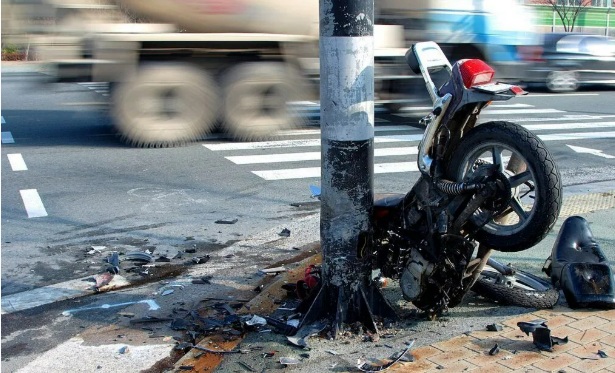Motorbike crashes and pedestrian knockdowns have been identified as the twin drivers of escalating carnage on the country’s roads, particularly in the cities of Accra and Kumasi in the Greater Accra and Ashanti regions.
Statistics from the National Road Safety Authority (NRSA) showed that 2,494 people died in road crashes in 2024, compared with 2,276 deaths in 2023.
In the latest road safety report by the Bloomberg Philanthropies for Global Road Safety (BIGRS) on Accra and Kumasi, it emerged that vulnerable road users, such as pedestrians, motorbike riders and bicyclists, accounted for 86 per cent of reported road traffic fatalities in 2024, while 88 per cent occurred in the Ashanti Region.
The Regional Technical Advisor for Africa of Vital Strategies, Dr Raphael Awuah, who presented the findings of the report in Accra yesterday, stressed that the increase in cases of pedestrian knockdowns and motorbikes required proactive measures to reverse the trend, especially when the government was finalising processes to legalise the use of motorbikes for commercial purposes in the country.
He further underscored the need for urgent action on enforcement of the road traffic regulations, engineering remediation, and enhanced stakeholder collaboration to stem the tides.
The launch of the two reports brought together key stakeholders in the road safety sector, including the Ministry of Transport, the National Road Safety Authority (NRSA), the Driver and Vehicle Licensing Authority (DVLA), CUTS International, the Accra Metropolitan Assembly (AMA), the Kumasi Metropolitan Assembly (KMA), and the Motor Traffic and Transport Division (MTTD) of the Ghana Police Service.
Accra situation
Details of the report on Accra showed that reported fatalities increased by 34 per cent in 2024 compared to the previous year, a development that reflects a similar pattern at the national level during the same period.
The report also showed that 56 per cent of the total fatalities in Accra involved pedestrians, while motorbike riders, vehicle occupants and other cyclists accounted for 27 per cent, 14 per cent and three per cent respectively.
In Kumasi, pedestrians accounted for 64 per cent of the deaths in 2024, while motorbike deaths were 24 per cent.
In terms of the crash and deaths by time of day, the highest number of road crashes in Accra occurred between 12 p.m. and 2 p.m., while that of Kumasi was between 4 p.m. and 10 p.m.
However, the majority of fatalities occurred from crashes that took place between 8 p.m. and 10 p.m., a development attributed to speeding and reduced visibility at night.
"This report highlights the need for targeted evening enforcement and visibility interventions," the report added.
Regarding the crashes per day of the week, the report revealed that many of the crashes occurred on Monday, while a lot of the fatalities were from crashes that took place on Fridays and Saturdays.
In Accra, the report identified 10 high-risk crash locations, led by 22 deaths on Ring Road Central, 15 deaths on J. A. Kufuor Avenue, 13 deaths on the Kwashieman-Lapaz Intersection, 13 deaths on the Tetteh Quarshie Interchange-Motorway Tollbooth, and 12 deaths on the KAAF University-Airport Junction.
The rest are 11 deaths on the Darkuman Junction-Mallam Bus Stop, 10 deaths at Akweteyman-Lapaz lorry station, 10 on Liberation Road, nine on the Hansonic Junction-Obetsebi Circle, and seven on the Kwame Nkrumah Avenue.
For Kumasi, the report cited the Sofoline station, Angloga Junction, Oteng Nkwanta and Silicon Junction as the top four crash locations, with deaths between five and eight people.
In addition, Santasi Roundabout, KNUST Police Station, and Aboabo traffic intersection had four deaths each, while KATH Roundabout, Pankrano Methodist Church, and Opoku Ware Senior High School all recorded three deaths each.
Speeding
The report revealed that in Accra, 57 of the motorbikes were frequently observed to have exceeded posted speed limits, a pattern that remained consistent over four years (2020-2024).
"This trend may be attributed to the growing use of motorcycles for commercial transport in Accra and surrounding communities," the report stated.
Dr Awuah said the findings reinforced the need for sustained monitoring and targeted speed management strategies, particularly among commercial motorbike users.

